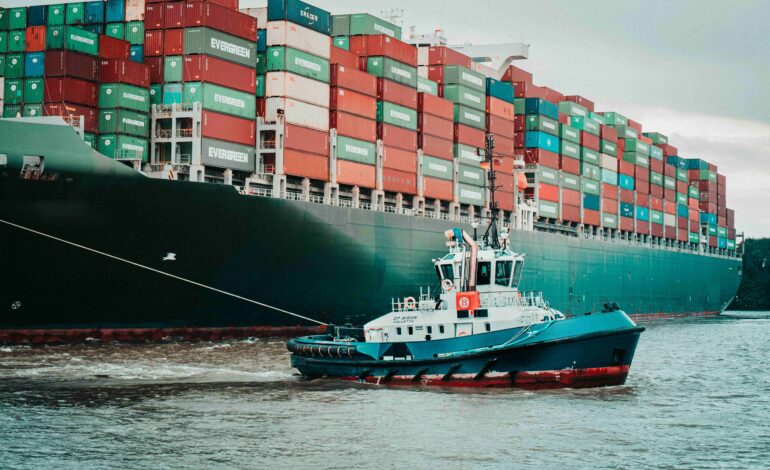
Economic Models for Predicting Bunker Fuel Market Trends
The bunker fuel market, crucial for global maritime transport, is influenced by diverse economic factors, regulatory changes, technological advancements, and geopolitical developments. Predicting market trends requires sophisticated economic modeling that integrates these variables to forecast supply, demand, and pricing dynamics. This article explores the key economic models used to predict bunker fuel market trends, highlighting their methodologies, challenges, and implications for stakeholders in the industry.
Understanding Bunker Fuel Market Dynamics
- Market Drivers and Influences:
- Global Trade and Economic Growth: Demand for bunker fuel correlates closely with international trade volumes and economic expansion, impacting shipping activities.
- Regulatory Policies: Environmental regulations, such as sulfur emissions caps imposed by the International Maritime Organization (IMO), shape fuel consumption patterns and market dynamics.
- Technological Advancements: Innovations in fuel efficiency and alternative fuels influence market competitiveness and demand for bunker fuels.
- Supply Chain Considerations:
- Production and Distribution: Bunker fuel supply chains are influenced by refining capacity, geopolitical stability, and logistical infrastructure, affecting market stability and pricing.
- Market Competition: Competition among suppliers and changes in crude oil prices directly impact bunker fuel pricing and market trends.
Economic Models for Predicting Bunker Fuel Market Trends
- Supply and Demand Analysis:
- Price Elasticity Models: These models assess how changes in bunker fuel prices affect demand elasticity among shipping companies and maritime operators.
- Supply Chain Dynamics: Analyzing production capacities, inventory levels, and shipping routes to forecast supply disruptions and price volatility.
- Macroeconomic Forecasting:
- Global Economic Indicators: Using GDP growth rates, inflation forecasts, and trade volumes to predict overall demand for maritime transport and bunker fuels.
- Exchange Rates and Trade Policies: Fluctuations in currency exchange rates and trade policies impact international shipping costs and bunker fuel pricing.
Technological and Environmental Factors
- Impact of Technological Innovations:
- Alternative Fuel Adoption: Assessing the adoption rates of LNG, biofuels, and other sustainable alternatives on bunker fuel demand and market share.
- Efficiency Improvements: Predicting the influence of engine technologies and vessel design innovations on fuel consumption patterns and market trends.
- Environmental Regulations and Compliance:
- IMO Regulations: Modeling the effects of sulfur caps and future carbon emission targets on bunker fuel pricing, supply chain operations, and compliance costs.
- Carbon Pricing Mechanisms: Evaluating the economic implications of carbon pricing policies on bunker fuel pricing and market competitiveness.
Challenges and Considerations
- Data Quality and Availability:
- Data Integration: Ensuring comprehensive data sources and accurate modeling inputs from global shipping databases, market reports, and regulatory updates.
- Forecast Accuracy: Addressing uncertainties such as geopolitical events, market shocks, and regulatory changes that can impact model predictions.
- Policy and Regulatory Uncertainty:
- Geopolitical Risks: Modeling the impact of geopolitical tensions, trade disputes, and regulatory shifts on global bunker fuel markets and pricing trends.
- Long-term Sustainability: Incorporating long-term sustainability goals and emerging environmental policies into economic models to anticipate future market scenarios.
Future Outlook and Industry Adaptation
- Advancements in Modeling Techniques:
- AI and Machine Learning: Integration of advanced analytics to enhance predictive capabilities and adaptability to evolving market dynamics.
- Scenario Analysis: Conducting scenario-based modeling to simulate alternative futures and assess resilience strategies for stakeholders in the bunker fuel market.
- Collaboration and Knowledge Sharing:
- Industry Collaboration: Enhancing collaboration among stakeholders, including shipping companies, fuel suppliers, and regulatory bodies, to improve data transparency and model accuracy.
- Policy Alignment: Advocating for coherent policies and incentives that promote sustainable fuel alternatives and support economic resilience in the maritime sector.
Conclusion
Economic models play a critical role in predicting bunker fuel market trends by integrating complex variables such as economic indicators, regulatory frameworks, technological advancements, and environmental factors. As the maritime industry navigates towards sustainable practices and regulatory compliance, robust economic modeling will be essential for anticipating market shifts, optimizing operational strategies, and fostering long-term resilience in the global bunker fuel market.





